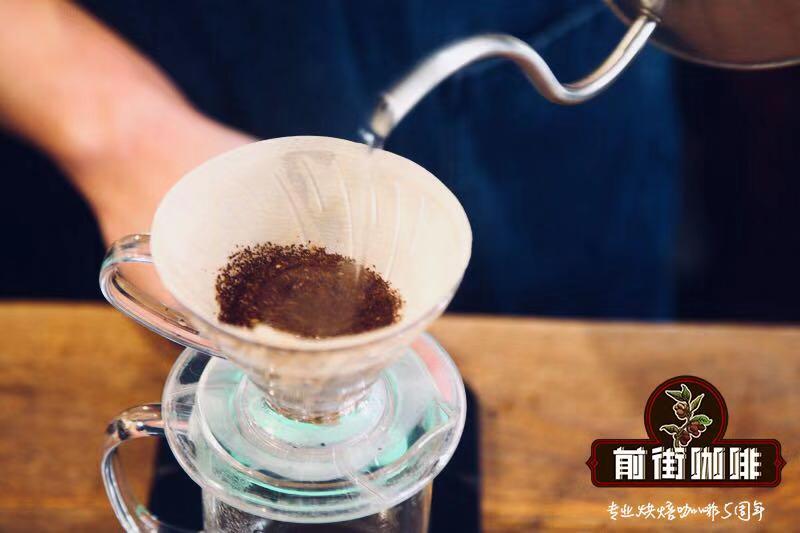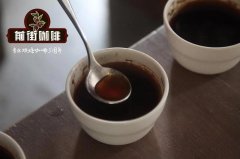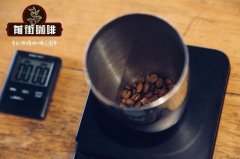Why Kenyan Coffee uses Water washing method to share the parameters of Kenyan hand Coffee

Professional coffee knowledge exchange more coffee bean information please follow the coffee workshop (Wechat official account cafe_style)
Qianjie-brief introduction of Kenyan Coffee treatment and hand Flavor
Kenya is a tropical region, with two rainy seasons a year and two harvests, with 60% concentrated from October to December and 40% from June to August. Coffee is mainly grown in volcanic areas from the capital Narobi to the mountains of Kenya at an altitude of 1600-2100 meters. This height is suitable for the development of coffee bean flavor, because the mountain temperature is lower, the growth is slow, the aroma components of coffee beans have been fully developed, the sour taste is more obvious, and the texture is harder. This fertile moonbend-shaped coffee area is the main producer of Kenyan boutique beans.
What is the K72 washing method?
It is a cyclic repeated treatment method which is washed after harvest and fermentation. The best quality coffee cherries were selected on the harvest day, peeled and fermented for 24 hours, and then washed with clean river water 24 hours later. Then, it is fermented with clean river water for 24 hours, then washed, and repeated 3 times for 72 hours, so it is called Kenyan 72-hour fermentation water washing treatment, referred to as K72.
In this way, the coffee beans can be fermented for a long time at low temperature, and finally dried and dehydrated, so that the beans can have a brighter, cleaner and full flavor!
Sharing the parameters of Qianjie hand-made coffee
Kenya Karogoto AA
Karoguto AA, Kenya
Country Kenya (Kenya)
Neri (Nyeri)
Treatment Plant Carol Goto treatment Plant (Karogoto)
1800 meters above sea level
Variety SL28, SL34
Cooperative Tekangu FCS
Small farmers, members of producers' cooperatives
Parameters: 18g powder, water temperature 90 ℃, medium and fine grinding (BG 6S: 60% pass rate of Chinese standard No. 20 sieve), ratio of powder to water at 1:10 (excluding ice), add 100g ice to the sharing pot.
Steaming with water about twice the weight of powder, stop steaming and start water injection when the powder bed is wet and dry, the time is about 30 seconds, when the water is injected to 110 grams, the water level is about to be exposed, the water injection will continue to stop at about 180 grams, and the filter cup will be removed after all the water in the filter cup has been filtered.
[washed Kenya-asali] A hint of jackfruit, floral and pine aromas, acidity of plum, lemon, citrus and virgin fruit on the palate, caramel finish and juicy finish.
Knowledge Gift: SL34 and SL28 taste similar, except for the complex and changeable acidity, and great sweet finish, the taste is heavier, more full-bodied and cleaner than SL28. SL34 has French missionaries, bourbon, and more Ironka lineage. Dou looks similar to SL28, but is more adaptable to sudden heavy rain.
END
Important Notice :
前街咖啡 FrontStreet Coffee has moved to new addredd:
FrontStreet Coffee Address: 315,Donghua East Road,GuangZhou
Tel:020 38364473
- Prev

African Kenyan Coffee AA grading system Kenyan Coffee producing area Flavor
Professional coffee knowledge exchange more coffee bean information please follow the coffee workshop (Wechat official account cafe_style) front street-Kenya coffee grading system, a brief introduction to the development history of coffee has been recorded as early as the 8th century AD, coffee shops were also popular in the 17th century, while its neighboring countries
- Next

What brand of black coffee is Colombian coffee good to recommend?
Professional coffee knowledge exchange more coffee bean information please follow the coffee workshop (Wechat official account cafe_style) front street-Colombian coffee, black coffee knowledge introduction as the world's third largest coffee producer, there should not be micro-batch processing phenomenon. In fact, however, the appearance of micro-batch coffee in Colombia, as a characteristic product of small-volume countries, is both unexpected and unexpected.
Related
- Beginners will see the "Coffee pull flower" guide!
- What is the difference between ice blog purified milk and ordinary milk coffee?
- Why is the Philippines the largest producer of crops in Liberia?
- For coffee extraction, should the fine powder be retained?
- How does extracted espresso fill pressed powder? How much strength does it take to press the powder?
- How to make jasmine cold extract coffee? Is the jasmine + latte good?
- Will this little toy really make the coffee taste better? How does Lily Drip affect coffee extraction?
- Will the action of slapping the filter cup also affect coffee extraction?
- What's the difference between powder-to-water ratio and powder-to-liquid ratio?
- What is the Ethiopian local species? What does it have to do with Heirloom native species?

